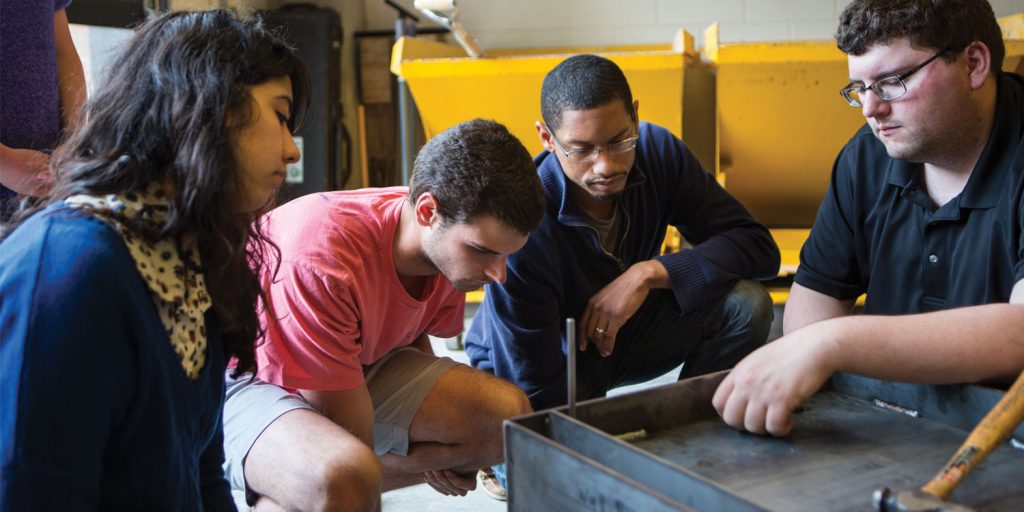A team from the Tickle College of Engineering is continuing its work with Great Smoky Mountains National Park and Friends of the Smokies to redesign and manufacture its visitor donation boxes.
Friends of the Smokies asked the college to help solve a critical problem: how to design and produce a more durable and secure collection box, as vandals have targeted the boxes in the past.
The boxes are costly and not easy to repair, so the damage can take them out of commission, leading to a slowdown in vital contributions.
A select group of students from three engineering departments have worked together to help bring the project to life. Friends of the Smokies assessed their initial prototype and made suggestions for potential modifications.
If all goes well with those tweaks, working boxes will be put in place by the fall.
The Smokies are the most visited national park in the United States, with 11.3 million visitors last year. By comparison, the second, third, and fourth most visited—Grand Canyon, Yosemite, and Yellowstone—have 11.6 million visitors combined.
Unlike those parks, however, Great Smoky Mountains does not charge admission, so being able to collect donations is critical to maintaining the park.
“Engineering is all about making science practical, about developing and improving things that impact our lives,” said Chris Wetteland, a lecturer in materials science and one of the faculty members helping guide the project.
Lecturer Jenny Retherford, another project leader and a faculty lecturer on civil and environmental engineering, pointed out that Friends of the Smokies is a key ally that enables the park to enhance the experience for visitors.
“They help the National Park Service protect and maintain the Smokies in ways that might not otherwise be possible,” said Jenny Retherford.
“They’ve helped with everything from restoring buildings and maintaining trails to reintroducing elk to the park. Donations are the key to all of those efforts.”
Engineering students from each department have used their specific backgrounds to contribute to the project: materials science students determined the best materials to use, civil engineering students helped design and construct it, and mechanical engineering students developed the inner workings of the door.
Further extending the multidisciplinary aspect, students in the Min H. Kao Department of Electrical Engineering and Computer Science are developing an app that would allow visitors to scan a code on the box and make donations wirelessly.
Another key improvement the team made is standardizing the design of the boxes.
“Currently, there are no two donation boxes exactly the same,” said Wetteland. “With this design, it would allow replacement parts to be easily manufactured for a standard box without having to replace the whole device.”
If successful, the Friends of the Smokies could eventually use UT’s device to replace all the boxes in the park, securing the important revenue stream for one of the country’s most iconic locations.
